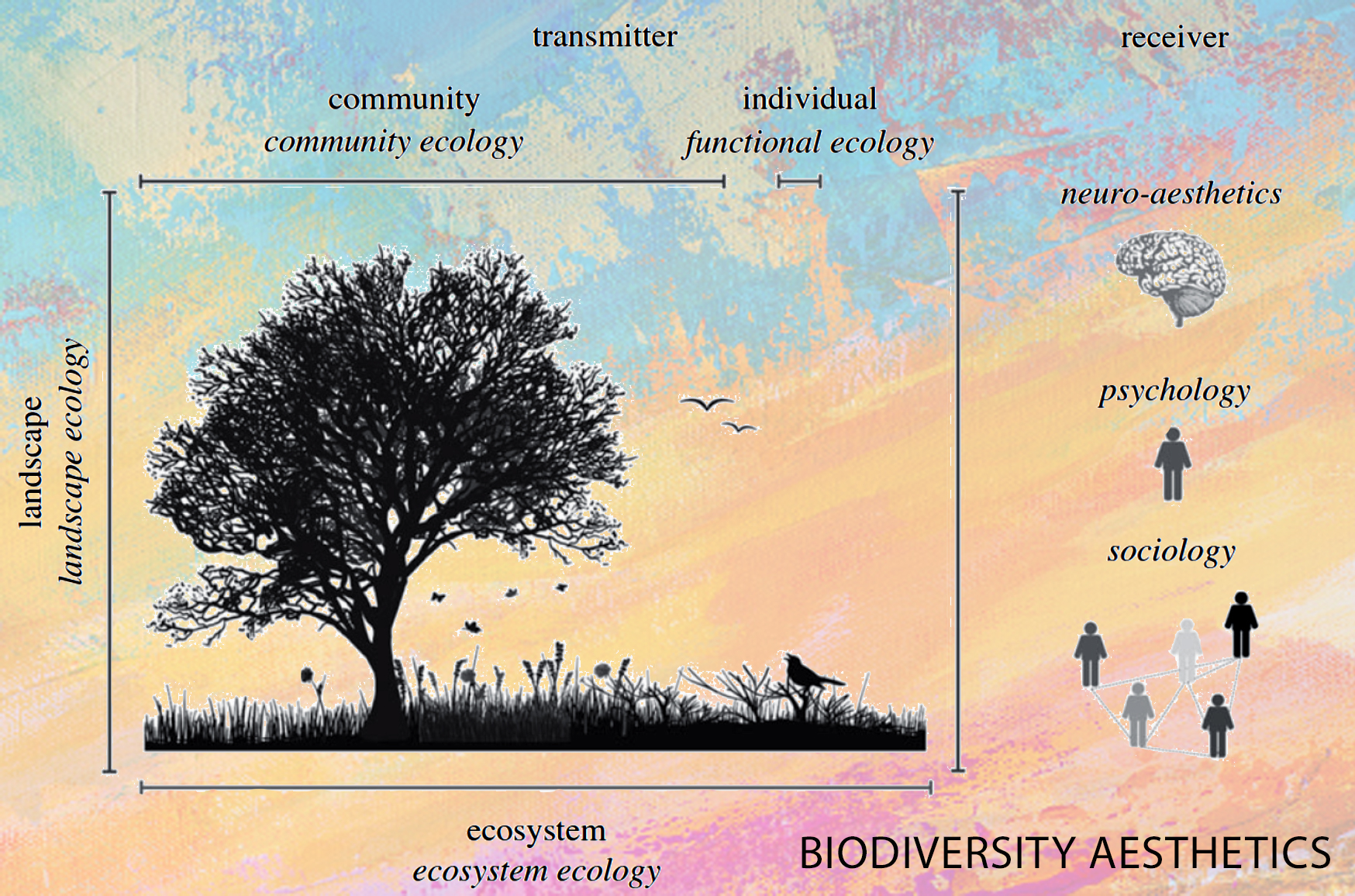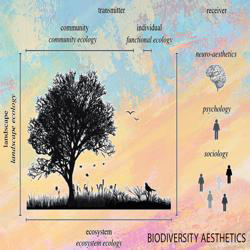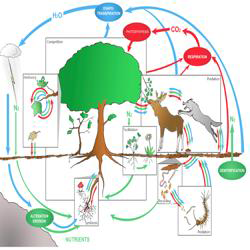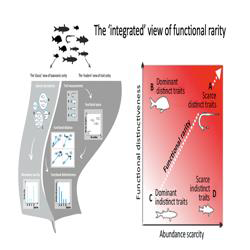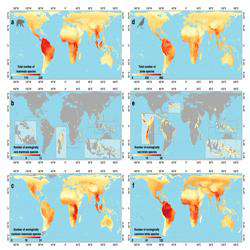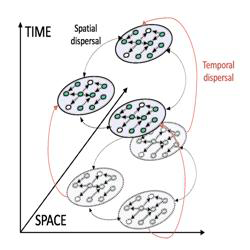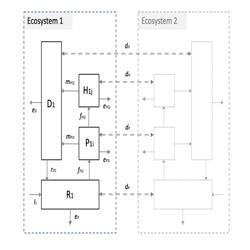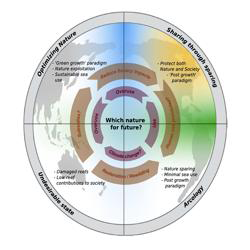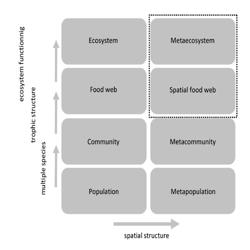|
BIODIVERSITY AESTHETICS
The aesthetic value of biodiversity is recognized as a cultural ecosystem service. However it is almost absent from current studies that link biodiversity and the properties of ecosystems, which focus on the economic and functional aspects of biodiversity. The aesthetic experience of biodiversity is the act of appreciating and feeling beauty through the observation of a species, an assemblage of species or an ecosystem. This aesthetic experience is central to our relationship with nature, and to our motivations to protect it. It involves different levels of biological diversity organization (the transmiter) as well as different cognitive, psychological and social processes (the receiver).
The different levels of organization of the transmiter are studied in different fields of science ecology, functional ecology, the ecology of communities and ecosystems, and landscape ecology. From the point of view of the receiver (the human), the cognitive processes associating visual information to emotions are studied in neuro-aesthetics and psychology. How are these emotions shared within human groups is the domain of sociology. Social sciences and psychology study also the influence of the perception of landscapes and biodiversity on human behavior or mental health. Philosophy, art and the social science connect the receiver and the transmiter by studying the relationship between culture and nature (e.g. symbolic values, sense of place, etc.).
Most of my research program on the aesthetic values of biodiversity has been concerned so far by the evaluation of the aesthetic values of species and assemblages by using coralligenous assemblages and reef fishes as study systems. It has involved combining internet questionnaires, image analysis as well as deep learning technics. This research has also resulted in producing a synthesis paper.
I also developped a web site BIODIFUL.ORG which provides to the scientific community an online platform to host evaluation campaigns on the human perception of nature, based on photographic surveys. You are very welcom to contact me if you want to use it for your own research.
Back to Nicolas Mouquet homepage
|
Figure from Tribot, Deter & Mouquet PRSLB 2018. Proceedings of the Royal Society B
|
|
Reef Fishes
|
|
|
McLean M.*, Mouillot D., Langlois J., Arif S., Bejarano S., Casajus C., Edgar G.J., Flandrin U., Guilhaumon F., Judah A.B., Loiseau N., MacNeil M.A., Maire E., Stuart-Smith R.D., & Mouquet N.* (2025). Conserving the beauty of the worlds reef fish assemblages Proc. Natl. Acad. Sci. U.S.A. 122 (25) e2415931122, doi.org/10.1073/pnas.2415931122 (* These authors contributed equally to this study)
|
|
|
|
Mouquet N., Langlois J., Casajus N., Auber A., Flandrin U., Guilhaumon F., Loiseau N., McLean M., Aurore R., Stuart Smith R.D. & Mouillot D. (2024) Low human interest for the most at-risk reef fishes worldwide Science Advances, 10,eadj9510. DOI:10.1126/sciadv.adj9510
|
|
|
Langlois J*, Guilhaumon F, Baletaud F, Casajus N, De Almeida Braga C, Fleure V, Kulbicki K, Loiseau N, Mouillot D, Renoult JP, Stahl A, Stuart Smith RD, Tribot AS & N, Mouquet* (2022) The aesthetic value of reef fishes is globally mismatched to their conservation priorities. PLoS Biol 20(6): e3001640. doi:10.1371/journal.pbio.3001640 (* These authors contributed equally to this study)
|
|
|
|
Boudin E, Carcaillet F, Tribot A, Carabeux Q, Deter J, Claverie T, Villeger S and Mouquet N (2020) Coral Reef Fish: Not Just a Matter of Beauty! Front. Young Minds. 8:13. doi:10.3389/frym.2020.00013
|
|
|
|
Tribot, A.S, Deter, J., Claverie, T., Guillhaumon, F., Villeger, S., & Mouquet, N. (2019). Species diversity and composition drive the aesthetic value of coral reef fish assemblages. Biology letters, 15, 20190703, doi:10.1098/rsbl.2019.0703
|
|
|
|
Tribot, A.S, Carabeux, Q., Deter, J., Claverie, T., Villeger, S., & Mouquet, N. (2018). Confronting species aesthetics with ecological functions in coral reef fish. Scientific Reports, 8, 11733, doi:10.1038/s41598-018-29637-7
|
|
|
|
Coralligenous assemblages
|
|
|
Casoli E., Raschetti S., Mouquet N., Ventura D., Mancini G., Penna M., Andrea Belluscio A. and Ardizzone, G. (2025). Assessing the ecological and aesthetic effectiveness of restoration interventions on coralligenous reefs Restoration Ecology, e70092, doi.org/10.1111/rec.70092
|
|
|
|
Langlois J, Guilhaumon F, Bockel T, Boissery P, De Almeida Braga C, Deter J, Holon F, Marre G, Tribot AS & Mouquet N (2021) An integrated approach to estimate aesthetic and ecological values of coralligenous reefs. Ecological Indicators, 129, 107935, doi:10.1016/j.ecolind.2021.107935
|
|
|
|
Tribot, A.S.,Mouquet, N., Villeger, S., Raymond, M., Hoff, F., Boissery, P., Holon, F., Deter, J. (2016). Taxonomic and functional diversity increase the aesthetic value of coralligenous reefs. Scientific Reports, doi:10.1038/srep34229
|
|
|
